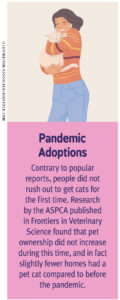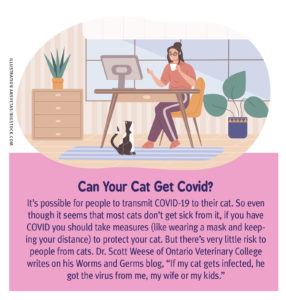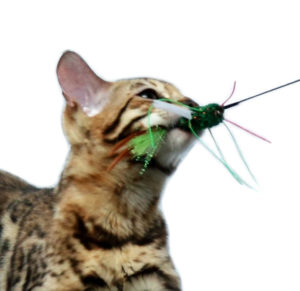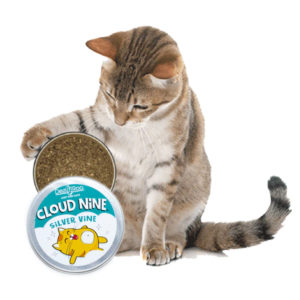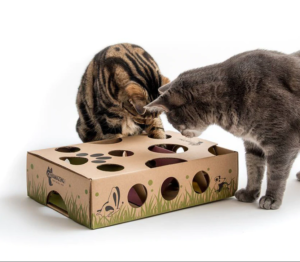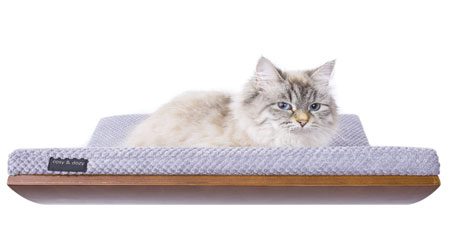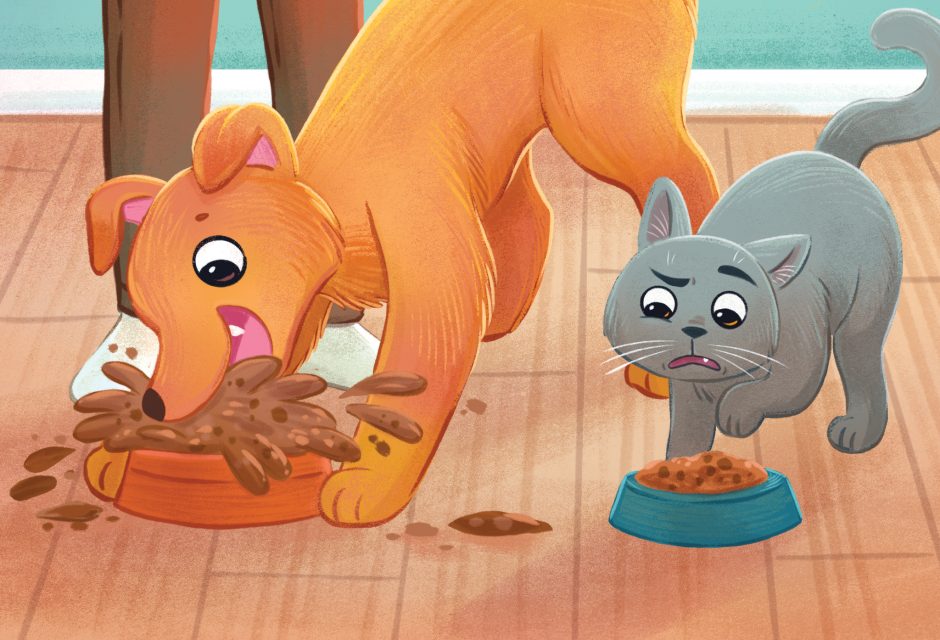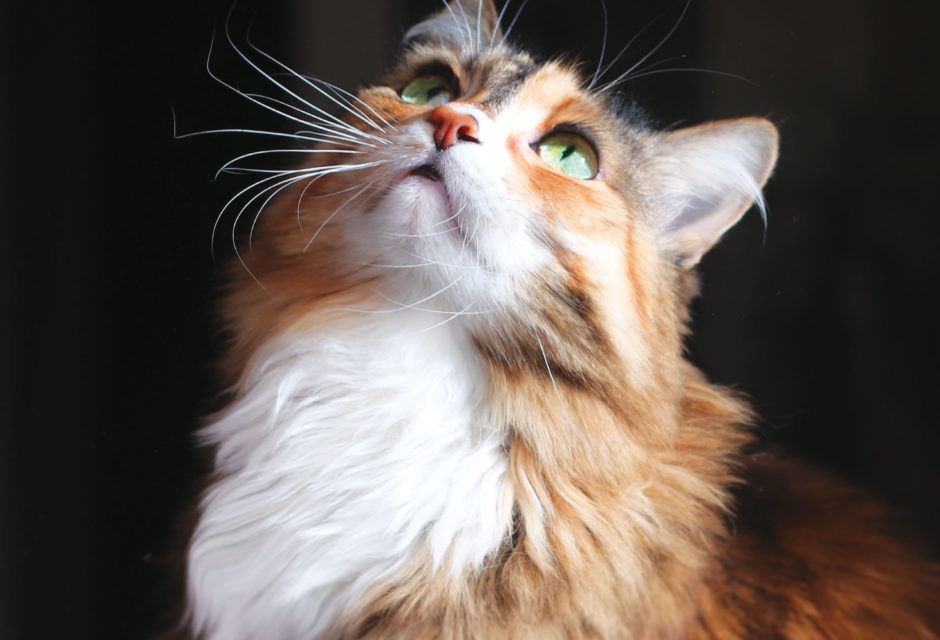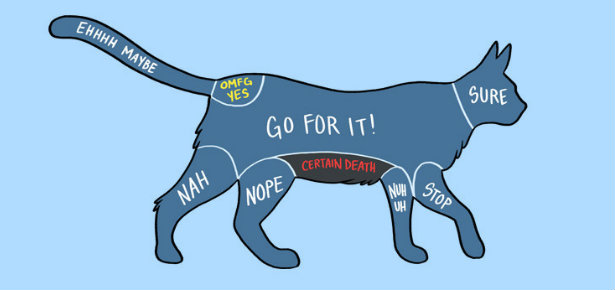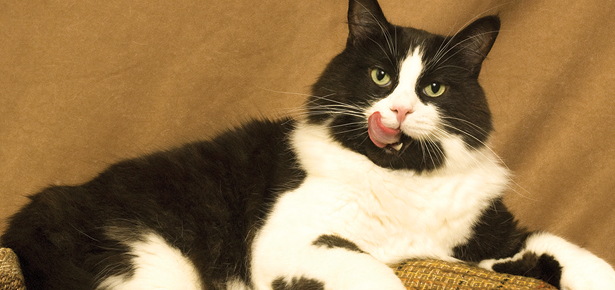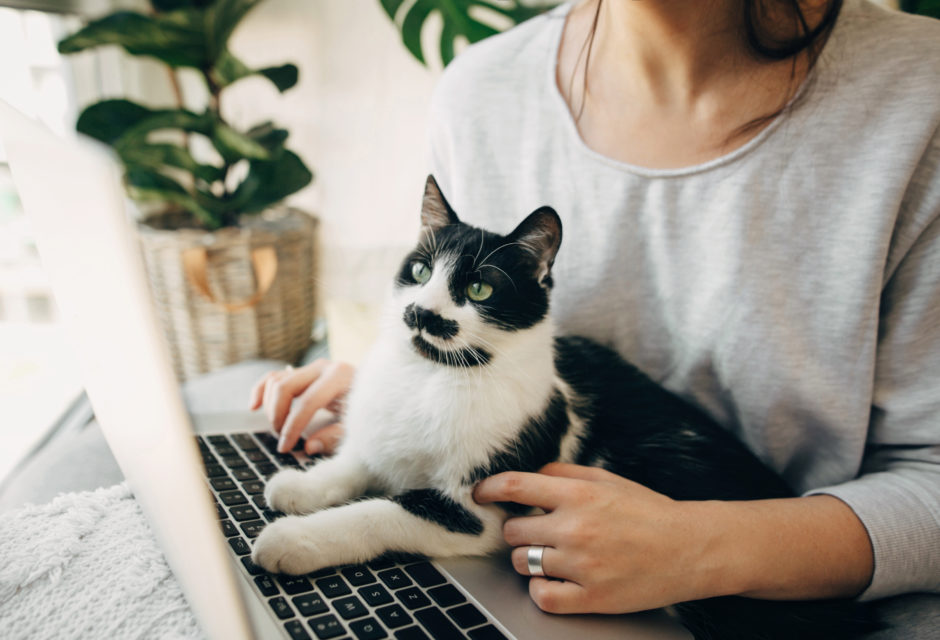
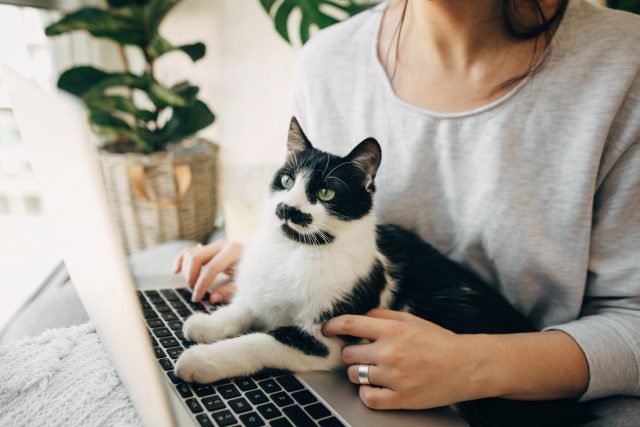
Cats & The Pandemic
The Surprising Ways the Pandemic Has Affected Cats
Towards the end of the working day, my cats come and join me in my home office and take turns to walk across my desk. Sometimes Melina lies down next to my keyboard and purrs. I pet her a little and then when I start to type again, she bats at my hand with a paw, a soft rap on the knuckles to tell me to finish work for the day.
They didn’t use to do this. I noticed a change in my cats in the first half of 2020: they like us being home more. It turns out my cats aren’t the only ones.
How the pandemic affected cats
Everyone’s experience has been different, but whether we had a strict lockdown or not, many of us worked from home more and went out to socialize less. This meant our cats had the pleasure of our company for longer—or had to put up with us being around, depending on their perspective.
Changes in cat behaviour
Cats may actually have fared better than other pets, as several studies show that people report positive changes in their cat’s behaviour. Many people say that their cat is interacting with them more, according to a survey of American pet owners published in People and Animals. Dr. Shelly Volsche of Boise State University, the first author of this research, says, “Our study and observations suggest that many cat ‘parents’ were quite surprised at their cat’s enjoyment of them being home. I remember at the beginning of the pandemic, there was a meme or media article to the effect that dogs were loving the work from home lifestyle and cats were simply waiting for us to go back to work. Our respondents clearly found the opposite.”
There are similar results from a large survey that took place during the first UK lockdown, published in the International Journal of Environmental Research and Public Health. Cat guardians, more so than other pet guardians, said there were positive changes in their pet’s welfare. 36 percent said their cat was more affectionate during the lockdown.
Understanding these changes is not so simple. If our cats are attached to us, it may be that they simply enjoy spending more time with us. Or we’re encouraging it. Dr. Emily Shoesmith of the University of York, the first author of the UK study, says we could be reinforcing our cats’ attention-seeking behaviour. We already know that people can inadvertently encourage their cats to meow more. “It is clear that many owners have a greater need for their animals’ company during the pandemic,” says Shoesmith, “so it seems reasonable to suggest that the perceived increase in cats affectionate behaviour and dependence on the owner may be the result of changes in owner behaviour during the pandemic.” Think wanting company and cuddles from our cat.
Another possibility suggested by Volsche is that until some pet guardians were bored at home, they did not notice the ways in which their cat was trying to connect with them.
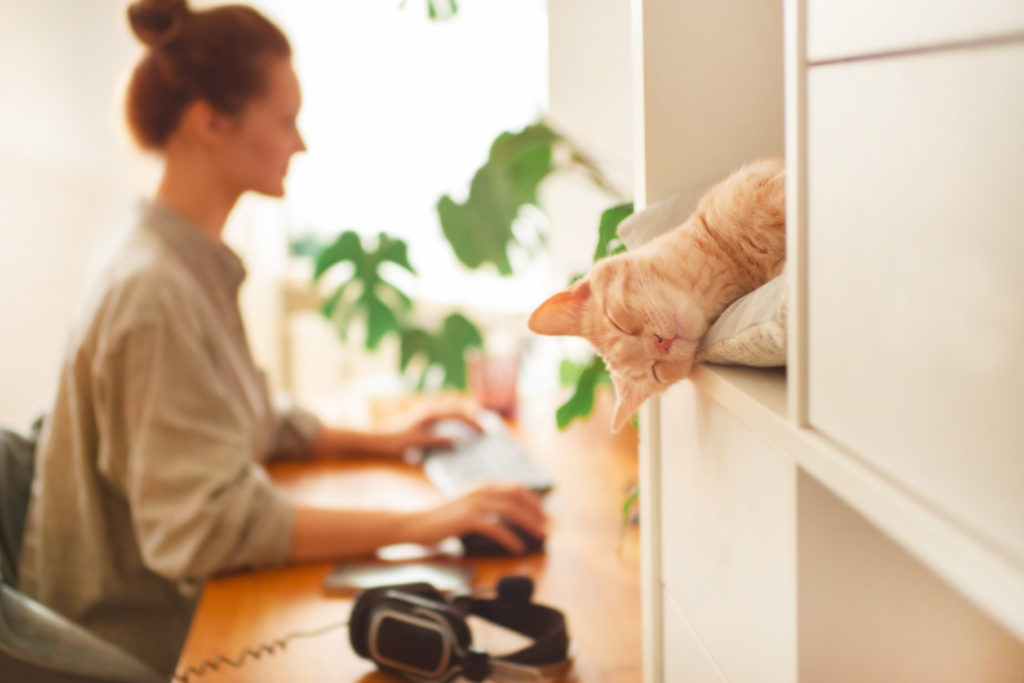
Happy vs. Unhappy: Signs in Cats
Your cat should still be doing their normal things: eating, sleeping, playing, sitting near you, etc.
A happy cat will have resting periods throughout the day. Signs of a more relaxed posture include laying on their side or curled like a doughnut, the tummy being visible, the tail being loose and away from the body, and the eyes being closed or semi-closed.
A happy cat will be interested in play, including playing with toys on their own and interactive play with you. More play with the wand toy will likely make them happier!
In a multi-cat home, cats will get along with each other as usual. A worsening of the relationship (which may be as subtle as one cat blocking the other) may be a sign that one cat is unhappy or unwell.
Changes in behaviour such as house soiling, agitation, frustration, aggression, or sleeping more than usual may be signs your cat is unhappy. See your vet to check for medical issues.
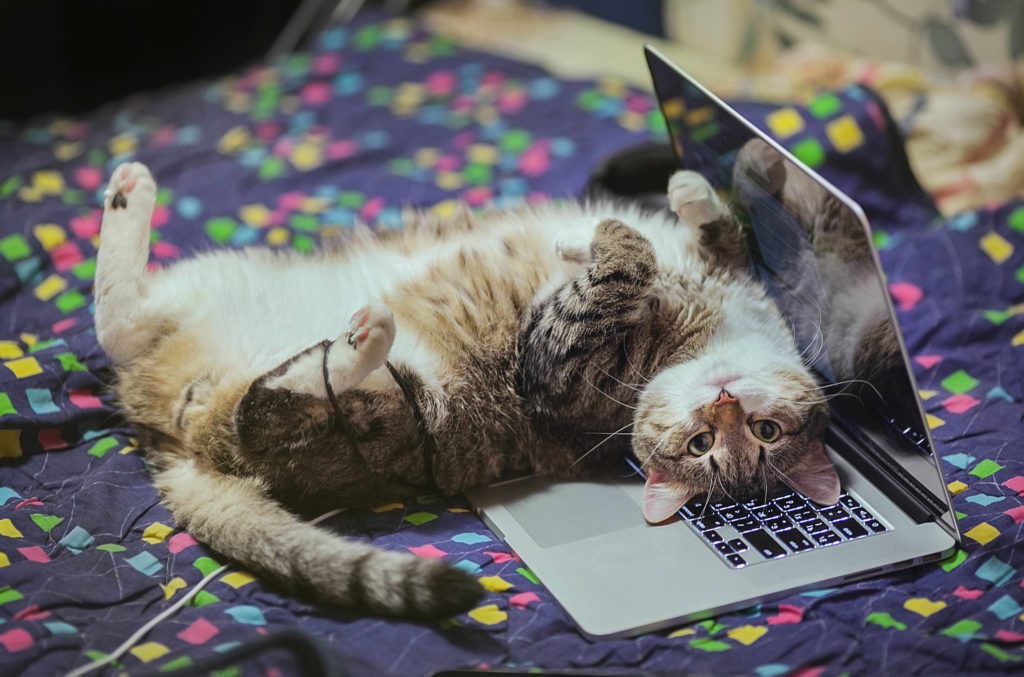
How to help your cat cope with changes
There are several ways to help your cats adjust to a new routine post the pandemic, but there’s something to not do too, at least not without some thought. If you’re heading back to the office every day, some people may be tempted to get another feline friend. But don’t rush out to get another cat unless you know that your existing cat is friendly towards other kitties. Some cats enjoy feline company but others have a strong preference to be the only cat in the home. A lot depends on their early experiences and personality comes into play too, so think carefully about your cat’s perspective.
If you’re now going out more than you did earlier in the pandemic, enrichment is very important, according to Dr. Lee Niel of the Ontario Veterinary College. She particularly recommends food puzzle toys and interactive play.
She says it’s also important to think about spending time with your cat: “Set aside time for them each day so that they have that opportunity for all of the things that you’ve been doing throughout the pandemic—snuggling together, playing together, just in general doing things together.”
Changes in routine can also be tricky. “If you are going to be away for longer periods of time and you’re going from five feeding times per day down to two feeding times per day, you probably need to adjust them to that gradually rather than just doing it all at once,” says Niel.
As things open up, cats also have to adjust to us inviting people into our home more often. It’s a good idea to make sure your cat has multiple safe spaces where they can hide if they wish. This is especially important if there are children in the home, since some cats are nervous of young children. For very small children, always supervise interactions and guide their hand if they want to pet the cat.
Some cats may not like their guardian leaving them home alone for longer periods. Niel says to keep a close eye on your cat “to make sure that you’re catching any of those subtle changes that might indicate that your cat is anxious about being alone more often.” Changes might include meowing at the door after you leave, house soiling, agitation, frustration, and aggression.
Cats need more
As we notice changes in cats behaviour due to the pandemic, it means it’s a good opportunity to learn. Volsche says, “Take the time to find out your cat’s likes and dislikes. Spend time on the internet learning more about cat body language so you can have better “conversations.” Buy books, join social media groups dedicated to cat training, and find the joy in trying to see the world through your cat’s eyes.”
Shoesmith says the results of her study are unexpected, “particularly as there is a general assumption that cats are much more independent than other species.” I think of the way my cats like to join me at my desk. If there’s something we can learn from the pandemic, perhaps it’s that, contrary to the stereotype, our cats do like—and need—our company after all.
Enrichment Ideas
One of the things I most enjoyed about writing my book, Purr: The Science of Making Your Cat Happy, was including lots of practical tips on enrichment. Here are three favourites:
- Play with a wand toy. Cats love interactive play! Move the end of the toy like it’s a prey animal. When it’s time to end the session, give the cat a treat or toy they can keep. Put the wand toy away when it’s not in use.
We love the PetKi’s Classic Rod toy ($11) with their Birdbug attachment ($16), rompicatz.com
- Use scent. Most people know about catnip, but not all cats respond (it’s genetic). Other scents you can try are silver vine (sticks or powder), honeysuckle wood, and valerian. Almost all cats will respond to at least one of these scents.
We love Dezi & Roo’s Cloud Nine Silver Vine, $11, deziroo.com
- Food puzzle toys are a great way to get your cat to work for their food. When introducing them, fill them to the brim, include treats, make sure they are on their easiest setting, and show your cat that food will come out. Alternatively, put small amounts of food in cupcake holders and hide them for your cat to find.
We love Cat Amazing’s Classic Puzzle Toy and Feeder, $16, catamazing.com
Join the newsletter and never miss out on cat content again!
"*" indicates required fields
By clicking the arrow, you agree to our web Terms of Use and Privacy & Cookie Policy. Easy unsubscribe links are provided in every email.





